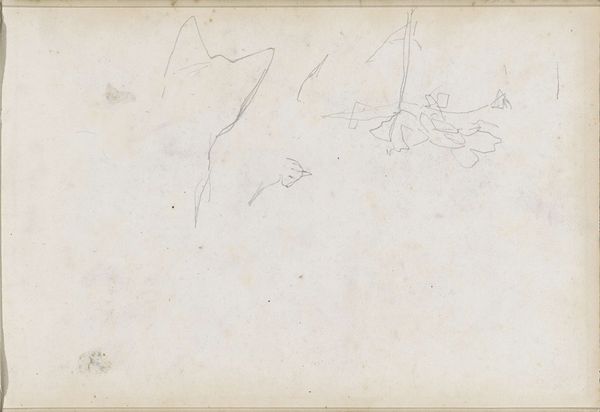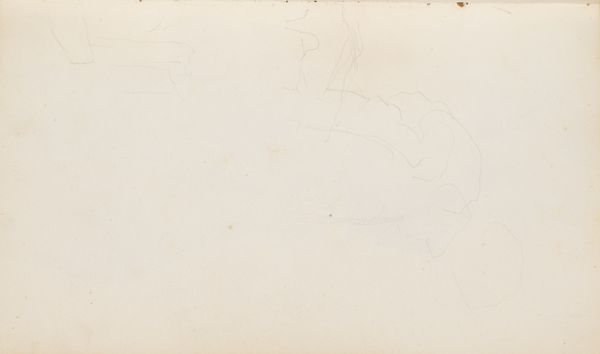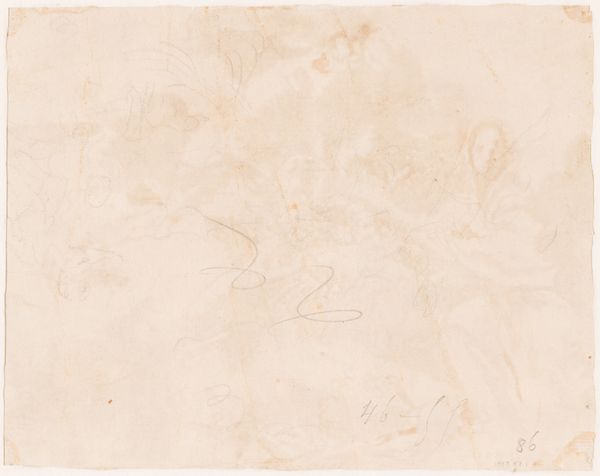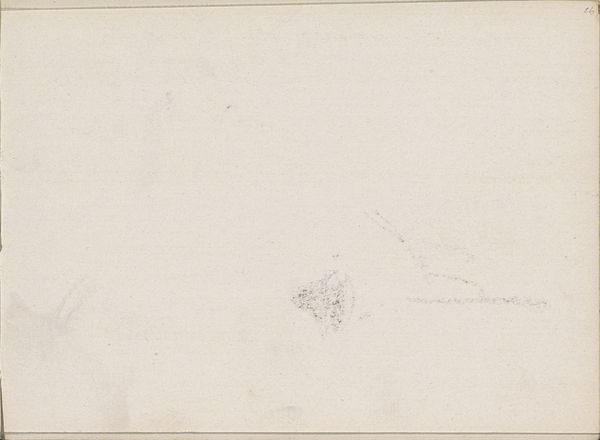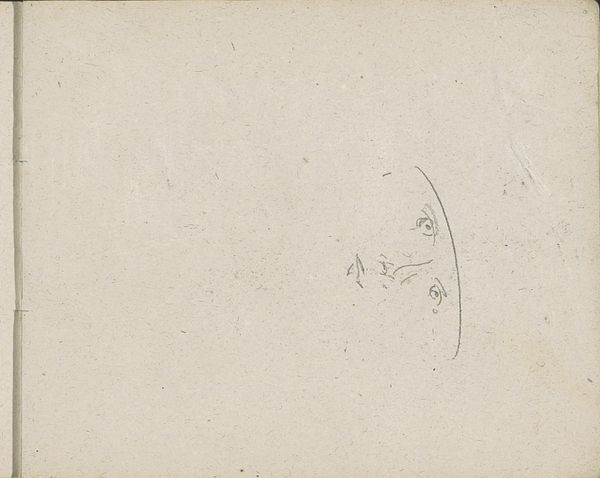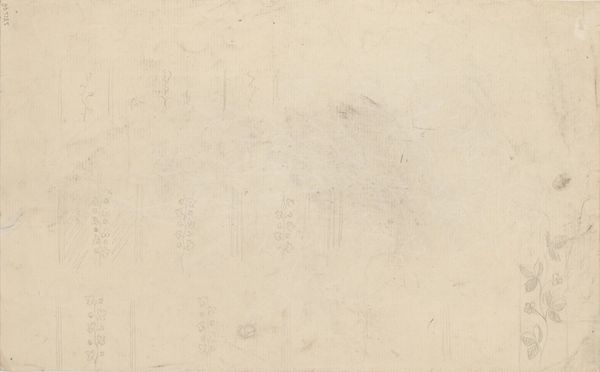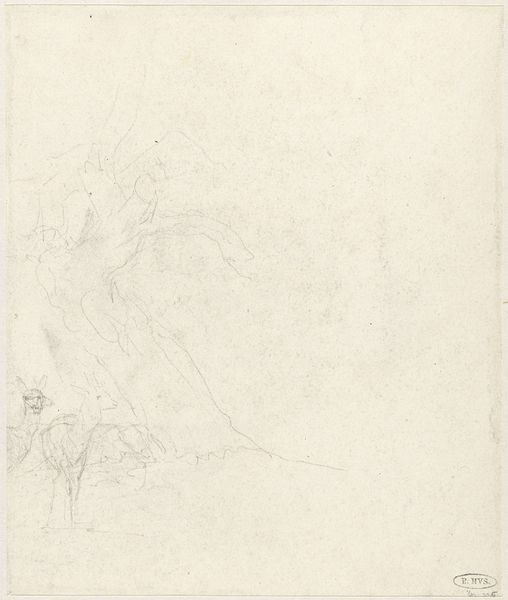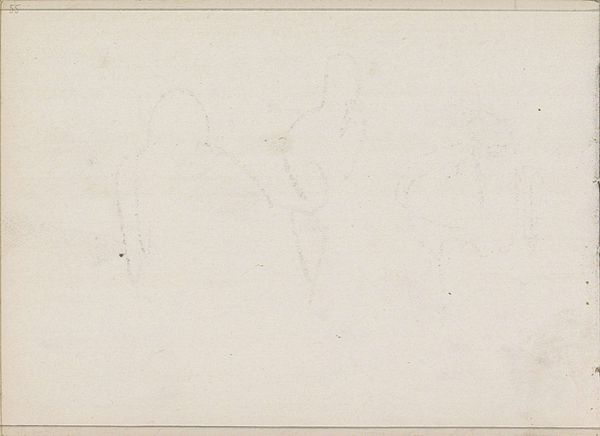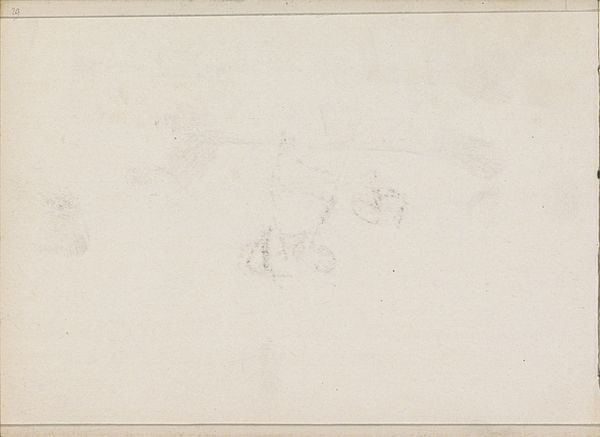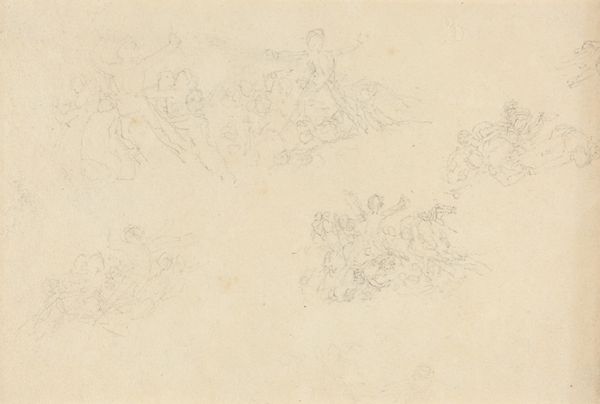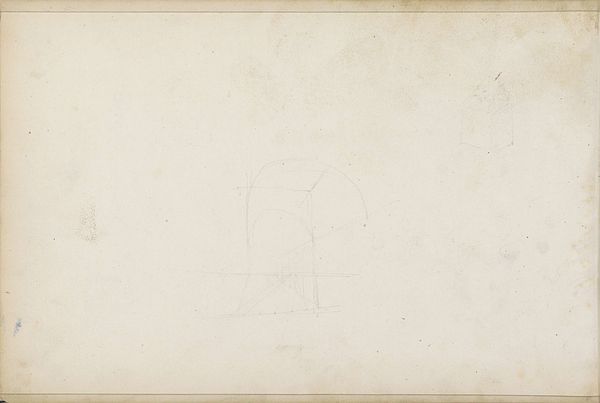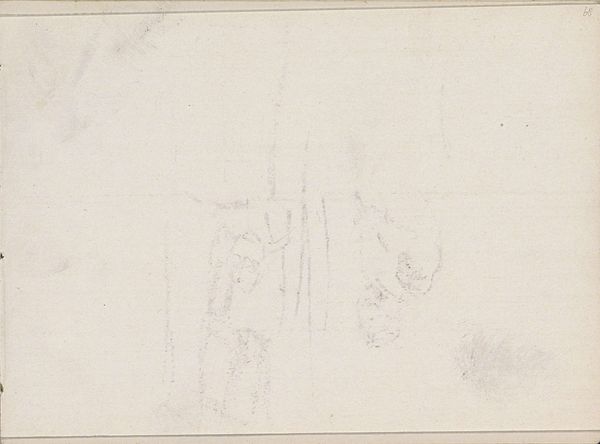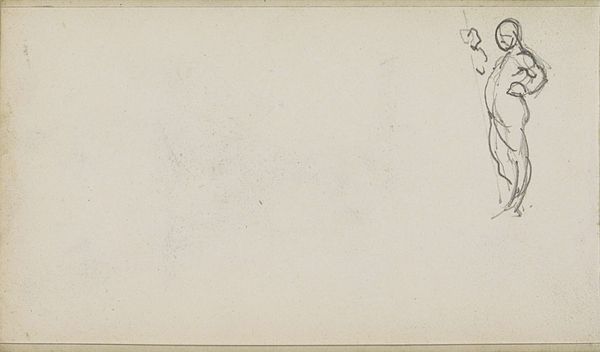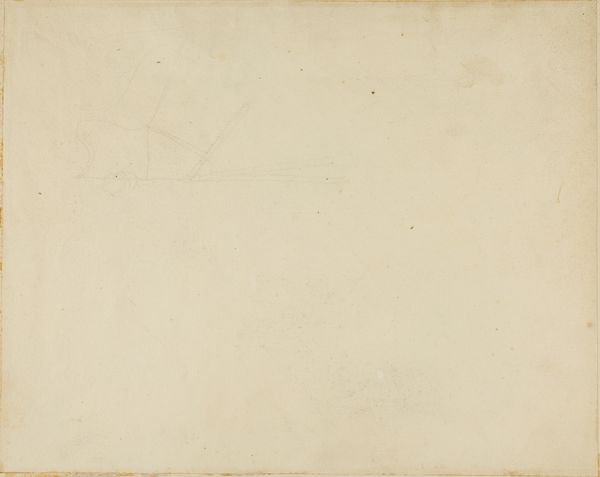
Tre skitser af hoved set bagfra, i profil og frontalt 1743 - 1809
0:00
0:00
drawing, pencil
#
portrait
#
drawing
#
neoclacissism
#
figuration
#
pencil
Dimensions: 123 mm (height) x 231 mm (width) (bladmaal)
Curator: Nicolai Abildgaard’s drawing, "Tre skitser af hoved set bagfra, i profil og frontalt," offers three studies of a head in varying perspectives. This work from the late 18th to early 19th century, is rendered in pencil and housed here at the SMK. What strikes you initially? Editor: The starkness of the image—the barest of lines defining human form. There’s something profoundly elemental about these heads, almost primordial. Curator: The sketch's linearity aligns with Neoclassical principles—the artist reduces form to its essence. See how he uses minimal shading, focusing on outline and contour? Editor: Absolutely. Yet, despite the absence of detail, the psychological implications are striking. That back view—we never know the hidden thoughts, or buried angers…it is somehow haunting, don’t you agree? Curator: Indeed. Consider also the iconographic associations of a profile. Here it conveys perhaps, classical heroism, a deliberate evoking of antiquity? These perspectives carry specific connotations regarding power and insight. The figure viewed head on, then, might evoke an appeal to the divine? Editor: That frontal view...Yes, almost iconic in its symmetry. It is less immediately “knowable” as a personality, more of an abstracted ideal. One wonders about Abildgaard's own inspirations. Perhaps classical sculpture, or earlier, more raw renderings? Curator: Abildgaard's references were almost certainly rooted in antique sculpture—his training grounded in studying ancient forms as paragons of beauty and balance. Note, furthermore, how each placement on the sheet guides the gaze and establishes relationships *between* views... a complex structural game here. Editor: A game indeed! It's remarkable how a few simple lines evoke such weighty implications. A demonstration, really, of how loaded simple representation can be. Curator: It encapsulates the period's obsession with form as embodying not merely aesthetics, but a pathway to larger understanding and truth. Editor: Such clarity in the composition grants accessibility while maintaining intellectual depth. An ideal synthesis.
Comments
No comments
Be the first to comment and join the conversation on the ultimate creative platform.
